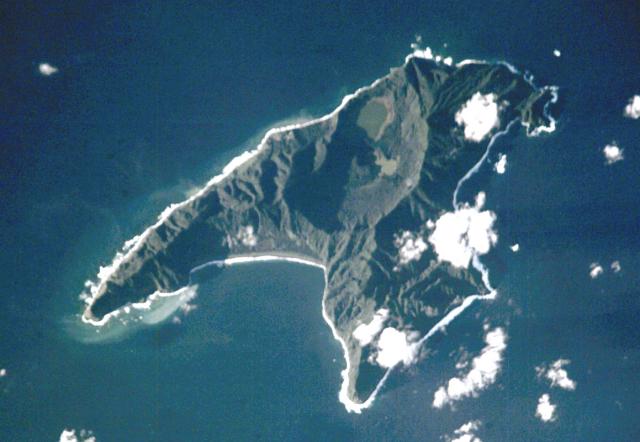New Zealand's newspapers and social media are full of talk about the Kermadec Islands. The Maori Party and many iwi are angry that the sanctuary the National government plans to set up around the archipelago interferes with fishing rights won under the Treaty of Waitangi.
When I looked at some of the online debates about the Kermadecs sanctuary, I was reminded of the words of the Cantabrian polymath Andrew Dean,
who said that Pakeha New Zealanders love to think of the uninhabited islands on the fringes of their nation as places without history and its complications. Pakeha want to flee to these islands imaginatively, Dean suggested, because they seem to offer refuges from the painful traps set by the colonial past.
Many of the Pakeha arguing the government's case on the Kermadecs certainly seem determined to avoid discussing the archipelago's Polynesian history. Again and again, they have insisted that the islands were never touched, let alone altered, by Maori (
this thread at
Whale Oil provides a few examples).
Yet archaeologists have found obsidian from Mayor Island in the Bay of Plenty
on Raoul, the largest of the Kermadec Islands, alongside recognisably Maori artefacts. Obsidian from Aotearoa has also been found on
Macauley Island, a smaller fragment of the archipelago.
The finds on Raoull and Macauley and
similar discoveries on Norfolk Island are amongst the best evidence we have for the theory that Maori made return voyages to their tropical East Polynesian homeland, or homelands.
Archaeologists working in the Cooks and Australs and Marquesas and other parts of tropical East Polynesia haven't so far uncovered any artefacts or minerals that definitely come from Aotearoa, but their excavations in those archipelagos have been exploratory rather than definitive. Many important islands, like Rapa Iti and Pukapuka, have hardly been disturbed by spades.
There are Polynesian peoples with a much more tragic connection to the Kermadecs.
In 1863 the government of Peru effectively legalised slavery, and for the next couple of years a score of ships cruised the Pacific, filling their holds with islanders they could sell at the fortress-port of Callao. More than three thousand Polynesians and Micronesians became slaves in Peru;
only a handful returned home, and those that did often brought with them lethal diseases.
Some of the kidnapped islanders did not even reach Peru. In 1863 a Spanish slave ship called the
Rosa y Carmen stopped at the Kermadecs carrying two hundred and sixty-six unwilling passengers. The
Rosa y Carmen's cargo had been seized from Rapa Nui, from the Cook atolls of Pukapuka and Rakahanga, from Tokelau, and from Niue. A few of the Tokelauan captives had been suffering from dysentery when they were kidnapped, and in the dank, barely ventilated hold of the
Carmen y Rosa the disease had spread quickly.
The captain of the
Rosa y Carmen had stopped at Raoul to dump his dying passengers, and to allow the others to recover. In
Slavers in Paradise, his indignant and meticulous account of the Peruvian slave trade, Henry Maude describes how the Spanish slavers anchored in Denham Bay, on the west coast of Raoul, brought their captives close to shore on a whaleboat, and then threw the Polynesians into the surf. Some of the islanders were too sick to walk, and drowned in the shallow water; others staggered to the beach and died there. Healthier captives were forced into the island's steep forests, and ordered to forage for food.
A small number of Maori and Pakeha had been living together on Raoul for more than a decade, growing crops and fishing and sometimes selling their produce to passing whaling ships. The members of this hybrid community went to the aid of the Polynesians on the beach at Denmore Bay. They quickly contracted dysentery and began to die.
Henry Maude believes that the
Rosa y Carmen left between sixty and one hundred and sixty corpses behind when it pulled out of Denmore Bay. Raoul Island's permanent inhabitants had to be evacuated shortly afterwards.
In 1887 New Zealand asked for and received British permission to annex the Kermadecs. The government in Wellington had become interested in building a tropical empire in the Pacific, and the little archipelago was seen as a stepping stone to larger and much more valuable territories like Samoa and Fiji.
The Kermadecs are not virginal islands. They have a long and sometimes tragic history, and this history should be remembered when their future is debated.
[Posted by Scott Hamilton]

















